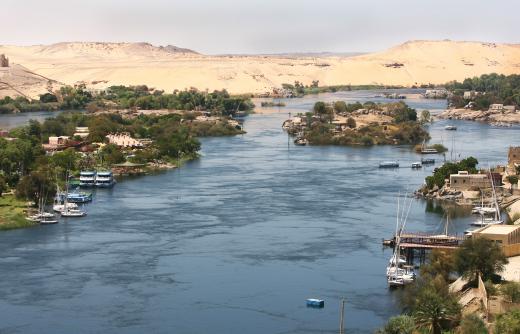What is a Pyramid?
 Mary Elizabeth
Mary Elizabeth
Mathematics. Pyramids are one of the fundamental solids used in Euclidean geometry. There are three elements required to make a pyramid. It is a
- 3-dimensional figure with
- triangular side faces that meet at a common vertex, with
- a polygon base.

Pyramids are classified by the shape of their base. A triangular pyramid has a triangular base and three triangular side faces. A square pyramid has a square base and four triangular sides. A pentagonal pyramid has a pentagonal base and five triangular sides. A hexagonal pyramid has a hexagonal base and six triangular sides, and so on.
Pyramids are referred to as n-sided, where n is the number of sides of the polygon that forms the base. An n-sided pyramid has n triangular faces.

Architecture. Pyramids are also a shape favored for architectural construction, both ancient and modern. The ancient cultures that built pyramids include Ancient Egypt, Mesopotamia, several Mesoamerican cultures, China, and Rome. In Egypt, where pyramids were used in funeral complexes, two types – step pyramids and “true" pyramids - were both built. In Mesopotamia, the type of pyramid built was the ziggurat, a temple with terraced stories. Many Chinese pyramids, used as burial monuments, have flat tops.

Cheerleading. The pyramid is also one of the fundamental cheerleading structures, and allows for endless variations. The World Cheerleading Association (WCA), which includes pyramids/basket tosses as one of the six technical skills scoring categories, issues General Safety Guidelines with rules for the use of pyramids in competition. There are six competition levels, and special rules for what kinds of pyramids are allowed at each level. Pyramids may be 2, 2½, or 3 persons high, but for WCA competition, the limit is 2½ persons high at Level Six.

There are three types of roles in cheerleading pyramids: bases, spotters, and flyers. Bases form the foundation for the flyers to mount on. Spotters may be simply standing by to assist, support, or catch someone in case of need, or may also brace the stunt.
AS FEATURED ON:
AS FEATURED ON:















Discussion Comments
@Charred - I think the answer to your question is religious in nature. If the ancient Egyptian pyramids were, as we are told, tombs for the Pharoahs to assist them in the afterlife, then there is something about a structure which rises towards the heavens to a single point that seems to make sense.
I don’t know-maybe there’s an official explanation that Egyptologists can give that makes more sense.
But that’s my gut feeling, from what I’ve read. And I think that it’s fairly logical, unless you want to entertain the more bizarre notions that the pyramids were actually ancient spacecrafts…
@Mammmood - That’s an amazing story. One thing that I’ve always wondered about the Egyptian pyramids, and others like them found in cultures throughout the world, is why did these cultures feel the need to build pyramids?
After all, in our modern culture, when people want to design big buildings, they design skyscrapers, which are tall rectangles. It seems to make more sense at least. What was it about the pyramid structure that seemed to hit a nerve with ancient man, in every culture of the globe?
@afterall - When I was a teenager my family went on a vacation to Egypt. I distinctly remember spending a night in the desert, where the Great Pyramids were. We didn’t stay overnight, but stayed at this house with some local people who showed us some hospitality.
While there I got very close to the Great Pyramid of Giza. I asked my dad for an opportunity to climb it, since other people were doing that. My dad said no, of course. However, it’s amazing when you get up close to see for yourself the immense size of those blocks. It baffles the imagination how the Egyptians accomplished that feat, a marvel even by today’s standards.
I think the person in charge of Egyptian Antiquities has since placed a ban on any further tourist exploration of the Pyramids. I wouldn’t mind going again someday, though, even to view it from a distance.
It's really interesting that so many different cultures developed pyramids separately. I know people who study history, anthropology, and even religion who find it really valuable for looking at how different cultures evolved, and what they have in common.
When we think of pyramids, the thought that often comes to mind is the "true" pyramids like the Great Pyramids in Egypt. Like this article says, though, there are several other kinds that are really beautiful.
Post your comments